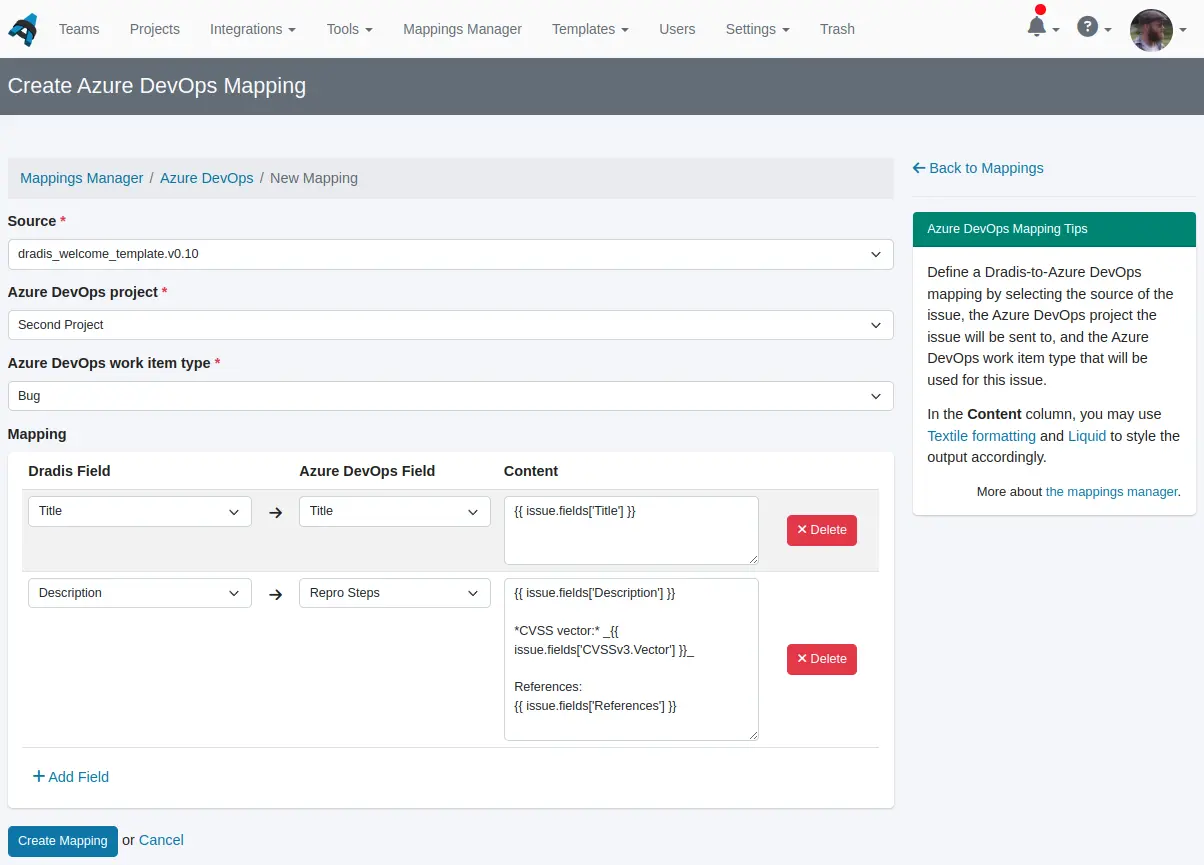Azure DevOps Mappings
Azure DevOps Integration is available for teams with a Remediate subscription.
To install Azure DevOps, use the installation instructions.
The Mappings Manager lets you map fields from Dradis projects to fields you use in Azure DevOps so that Azure DevOps work items can have content sorted into the relevant fields you use in Azure DevOps tickets.
To get started, go to the Mappings Manager and click on Send To: Ticketing: Azure DevOps.


This is where you configure the mapping. You will need to select the Source; this is the template with report template properties assigned that is typically associated with the projects you want to synchronise with Azure DevOps. The fields to be used in Dradis are taken from these report template properties.
Then set the Azure DevOps project and Azure DevOps work item type.
Next, start mapping the Dradis fields to the Azure DevOps fields you would like to use. When you pick a Dradis field, e.g. Title, the Content field will be pre-populated with the Liquid syntax for that Issue field, e.g. {{ issue.fields['Title'] }}. Then pick the Azure DevOps field you want to associate with that Dradis field.
You can also combine multiple Dradis fields as well as fixed content in the Content field. Select a Dradis field as a starting point, e.g. Description, the Azure DevOps field you want populated, e.g. Repro Steps, and then set the Content to the combination of content you want to show. For example, if the Content looks like this:
{{ issue.fields['Description'] }}
CVSS vector: _{{ issue.fields['CVSSv3.Vector'] }}_
References:
{{ issue.fields['References'] }}
Then the Repro Steps field in Azure DevOps work items will be filled out with the Description, CVSS Vector, and References in the formatting as per the above.
Click Create Mapping to save.
You can of course set multiple mappings, if you work with multiple projects or are sending multiple issue types from Dradis to Azure DevOps. Naturally you can also Edit or Delete mappings from the Ticketing: Azure DevOps view of the Mappings Manager.

Great job, you reached the end of the guide! Have you read all of them?